ADU 535 Shirley St (Fiscal)
The post is a follow-up to the 2020 post concerning the construction and financing of the ADU at 535 Shirley St NE answering questions which came up at Grand Rapids' first ADU bootcamp which occurred on August 22nd, 2025. The 2020 post ended the story of the ADU at its physical completion and occupancy permit. Of course, the financial status of the ADU took a bit longer to finalize.
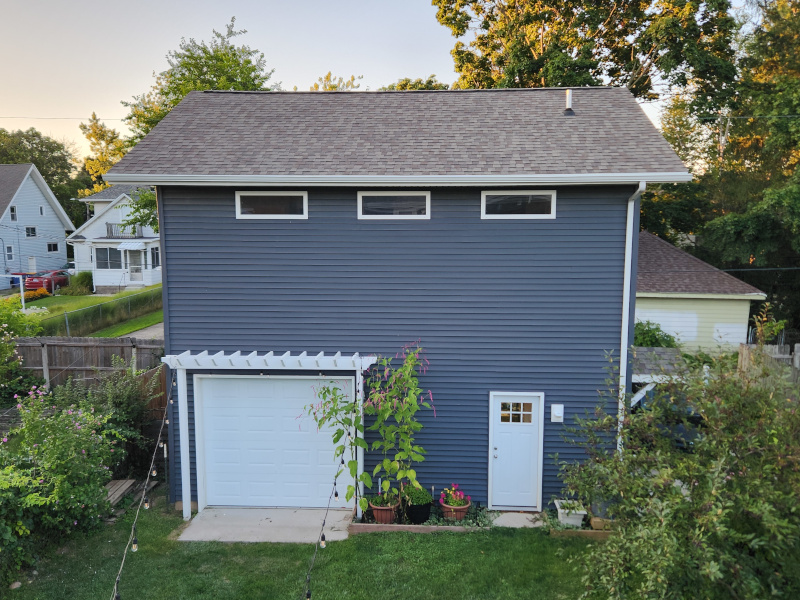
|

|
Financing
The ADU at 535 Shirley St NE was issued its occupancy permit on August 20th, 2019. At that point, due to the combination of the HELOC loan, two retirement (401k) loans, and credit card debt used to complete construction the monthly cost of the ADU was just north of $2,500/mo, as illustrated in the original post.
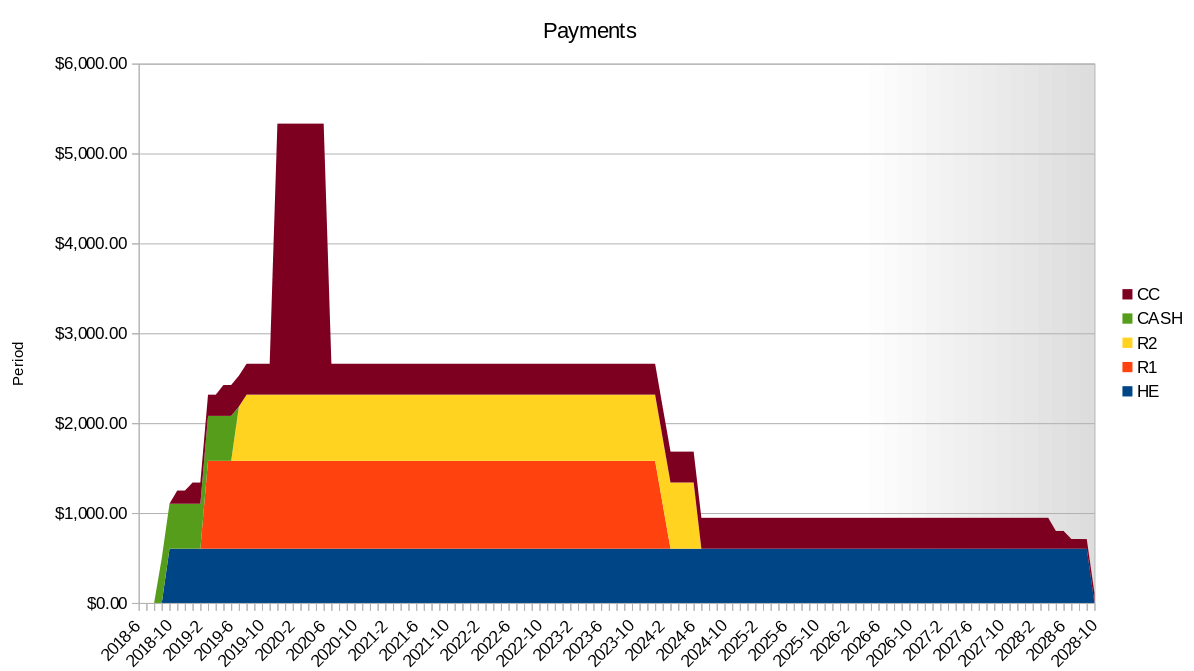
Subsequently, in June of 2020, the entire property was refinanced which included a reappraisal. At this point all the related debts as well as the existing mortgage of the primary property were combined.
The value of the property had been increasing, since ~2015, at an averaged rate of $23/day. Comparing the value of property determined when the HELOC loan was secured to when the refinancing occurred showed an increase of $80,500; or $123/day over the 699 days between the two dates. Assuming that the background appreciation of the property would have continued regardless of the construction of the ADU removes $16,077 from that number ($23 x 699 days) leaving an increase of $70,423 attributable to the construction of the ADU. Based on that calculation value 36% of the ADU's construction cost of $194,500 came back in equity.
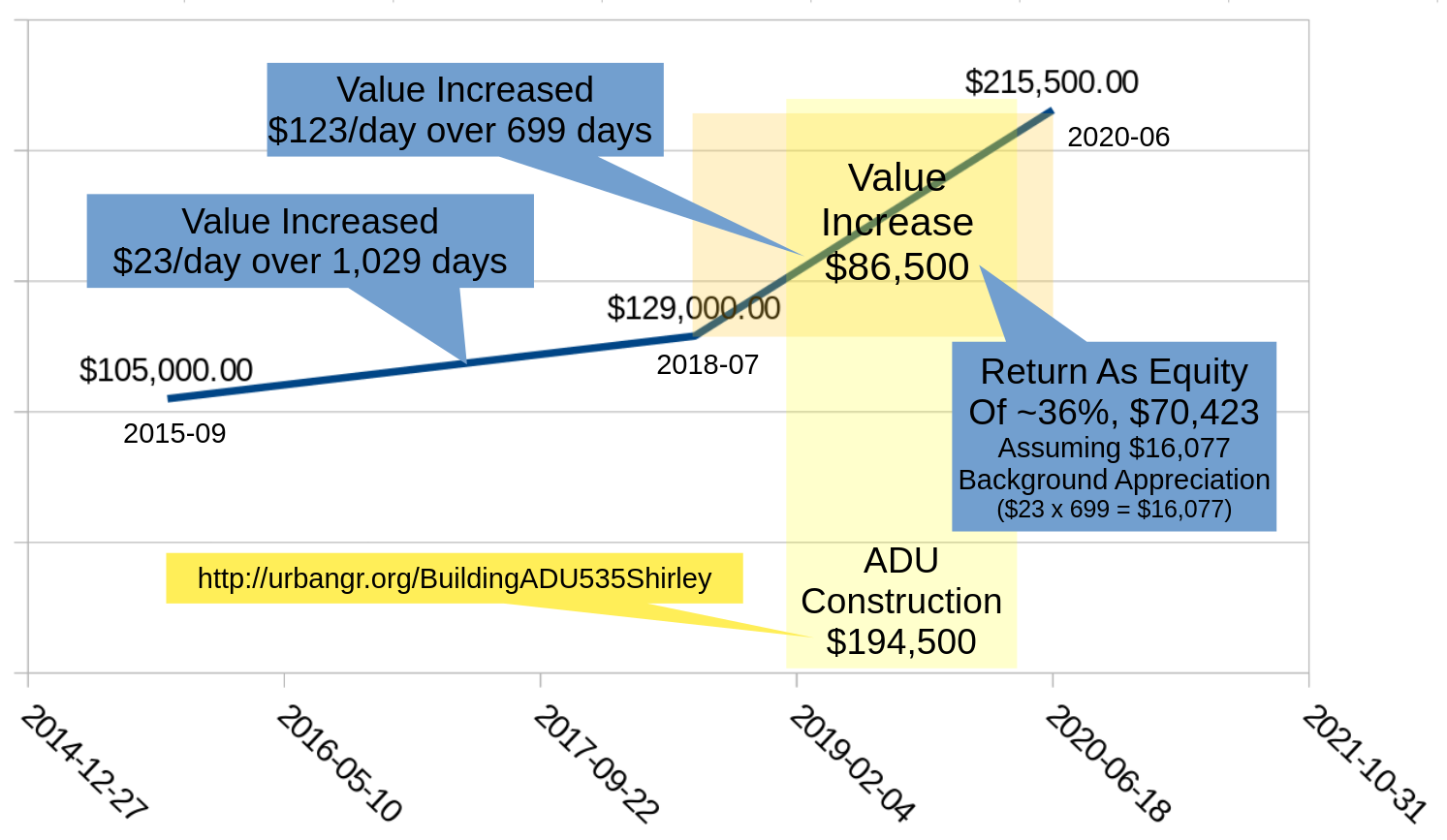
This combined the new mortgage payment on the existing property plus the ADUs payment is $1,776/mo [at the ~3% interest rates of the time]. Guessing that ~1/3rd of the property is the value of the ADU, based principally on floor-area above grade, that is ~$453/mo attributable to the ADU. Clearly that is napkin math, and there are multiple ways to slice that egg, however one also would need to slice the build cost of the ADU as it includes an insulated and heated garage which is used independently from the rental unit on the second floor.
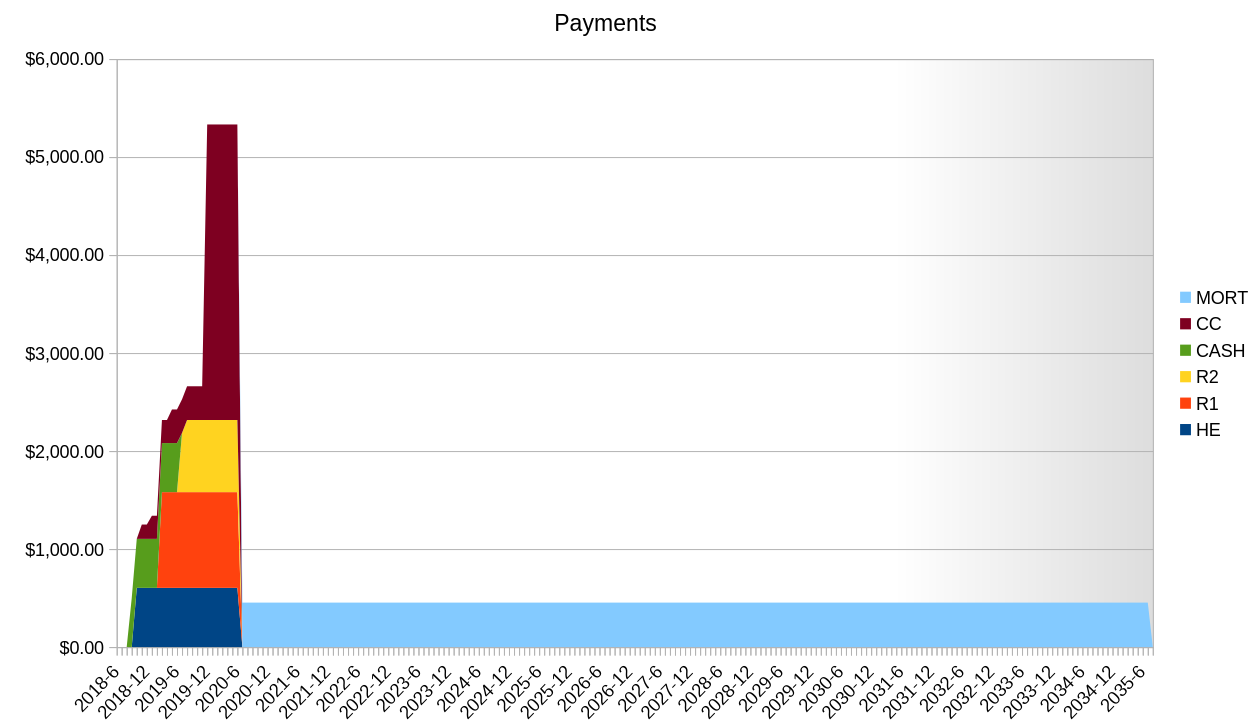
A significant portion of the increase came from the bank's appraisal determining that the property was now multi-family. While the Planning Department and Urban Planners may draw a distinction between a duplex and a single-unit-plus-an-ADU the banks do not.
Aside: Mortgage interest is tax deductible.
Property Tax
Property Taxes Over Time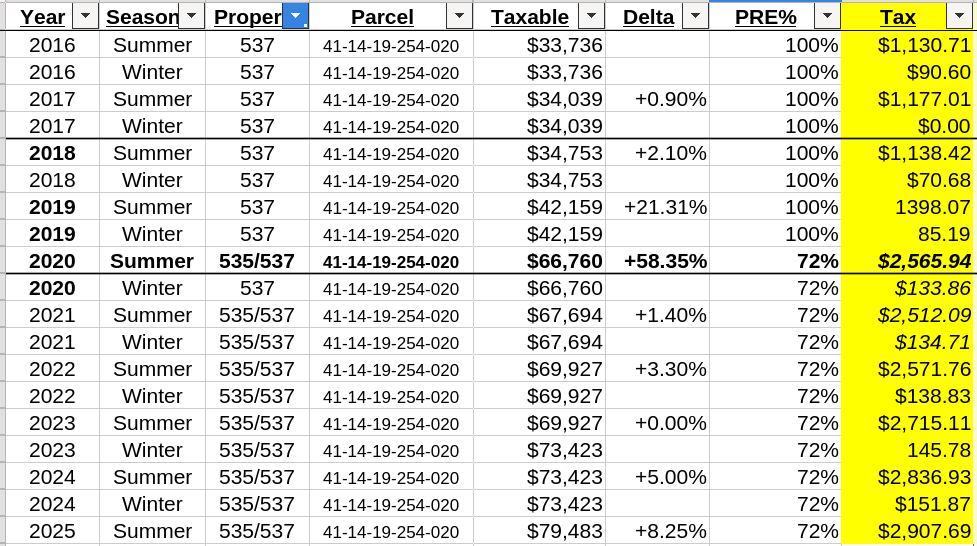
|
2025 Summer Taxes (PRE illustration)
|
From summer 2018 to summer 2020 - when the ADU was constructed - the taxable value of the property increased 92%, from $34,753 to $66,760. Combined with the 28% reduction in PRE the annual property tax increased from $1,209 (2018) to $2,699 (2020), a 123% increase. Or, monthly, an increase of $121/mo to $225/mo.
Following roughly the same 1/3rd estimate I used to divide the combined mortgage payment between the house+garage and the ADU the state of Michigan removed 28% of the properties PRE (Principle Residency Exemption). The PRE discounts the property taxes paid to a school operating millage by a property owner if that property is the owner's primary residence. The PRE on an owner-occupied single unit dwelling is 100%.
Property taxes are paid on the taxable value of a property, which is roughly half the "state estimated value". Why? Meh, it doesn't matter. A millage, levied in "mills", is the property tax due for that fund or authority. A "mill" is $1 per $1,000 in value, or (TXV * (mill/1000)). For example the City General Operate millage of 2.4398 mills is ($79,483 * (2.4398 / 1,000)) = $193.92/yr. That is the calculation for everything except for "School Operating", that calculation is ((TXV * (mill/1000)) * (1.0 - PRE)).
In Summer 2025 the reduction in PRE accounts for $400.49/yr of the increase; or $33.37/mo [for public schools]. At 100%, no ADU, I would have contributed $0.00 to the operating budget of Grand Rapids Public Schools.
Aside: To be crystal clear, yes, this means that the good god fearing families who live in homes they so very righteously own do not pay for the operation of local schools. So, property tax paid on rental housing, passed through to the occupants in their rents, are what pay for local schools? Yes. Aren't property values highly correlated to the perception of "good" schools ... but those owner's don't pay? Correct! All that endless blather from Democrats about equity and somehow this is not a front-and-center issue? Apparently so. Next time you are trapped in a meeting where some elected waxes sonorous about how deeply they care about "equity": ask about this. Elimination of the PRE would solve every school funding issue, state wide. Schools would be able to pay teachers a true middle-class wage! Such a crazy idea.
A rental property I own in the Belknap neighborhood has a PRE of 0%; of course. Because the occupant happens not to own the building. With a 0% PRE the School Operating tax paid on that property was $753.24 (2025). For a landlord that is a business expense of $62.77/mo. How do you imagine that gets covered?
